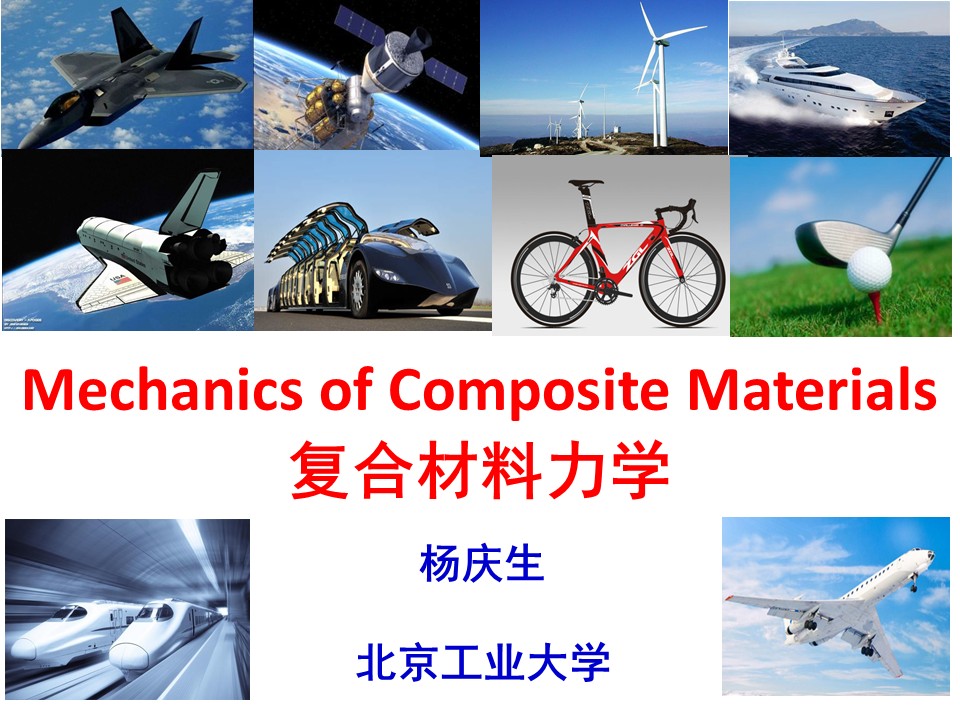
当前课程知识点:Tourism Policy and Planning(International Edition) > Week 5 Special Issues and Case Study > 5.2 From Capacity to Overtourism > 5.2.4 Management Approaches and Related Concepts (1)
返回《Tourism Policy and Planning(International Edition)》慕课在线视频课程列表
In this session, Professor Geoffrey Wall will talk about the management approaches and related concepts, especially the carrying capacity.
We would like to invite you to share some thoughts in the comments section below.
返回《Tourism Policy and Planning(International Edition)》慕课在线视频列表
在上一节中,
我们讨论了两种主要类型的影响研究:
物质科学研究
和感知研究。
最后,我们看了三种类型的结果,
点,线和区域,
作为一种简单的管理可能性的方法。
现在我们来进一步讨论管理方法和相关概念。
下面要介绍的材料是由美国农业部的地理学家首创的。
他们主要在国家公园工作,
人们在那里参观偏远和相对自然的地区。
然而,现在,
虽然城市地区的访问人数有所增加,
但我们看到城市地区和都市也采用了相同的思路。
有时很难将观念从一个地方转移到另一个地方。
下面我想谈四个话题:
首先,承载力是休闲和旅游研究文献中广泛讨论的问题。
然后,由于承载力在现实中非常难以使用,
于是产生了可接受的变化范围的替代想法。
再次是对景点管理的一些讨论,
最后是机会谱的概念。
承载力有两个主要方面,
即环境和行为,
这与我们早先讨论的物质或科学研究和感知研究有关。
承载力的定义是指在不降低环境质量或游客体验质量的前提下,
一个景点所能容纳的最大人数。
其理念是,随着游客数量的增加,
最终会达到一个临界点,
一旦超过临界点,
资源和游客体验质量将会被破坏。
但承载力也涉及其他方面的容量,
如停车位的数量或酒店房间的数量等支持设施的能力。
记住这些要素是很有用的,
因为这些设施的提供可以用来管理一个区域的资源使用人数。
甚至可能产生或高或低的经济容量。
因此,例如,
人们可能需要拥有一定数量的访客,
以便提供洗手间和收集垃圾等设施,
因此可能产生最小和最大容量。
所涉及的利益相关者的数量可能意味着
不同的利益相关者可能对访客的数量有不同的看法,
居民、访客、商业社区的观点可能各不相同,
这给了我们带来了额外的管理挑战。
容量的概念是可以满足的最大人数,
一旦超出,
系统就环境和经验质量而言都会崩溃。
但事实上,
很难计算出这个数字是多少。
事实上,我知道这些数字无法事先计算出来。
访客的活动,
访客实际所做的事情与实际访客数量同样重要。
但如果你只专注于游客数量,
那么你会错过许多可能的管理机会。
而且体验质量并不总是与访客数量成反比。
对大多数早期研究中的自然区域,
人们认为随着越来越多的游客的到来,
体验质量会降低。
但在其他情况下,
这并不总是正确的,
通常在特殊事件、节日、体育赛事等情况下,
人群和大量的游客更能带动气氛。
如果你去参加聚会,
而且你是聚会的唯一参会者,
那就没什么意思了。
因此,低数量游客的管理假设并不总是正确的,
尤其是在城市环境中。
此外,管理可以影响容量,
管理者改变景点的活动也可以改变景点可容纳的访客数量。
如果人们在一个大型的开阔的草地野餐,
他们一般会留在草地的边缘,
而不会在隐私很少的大空间中间野餐。
然而,如果你在草地中间种植一排树木或树篱,
你会发现有些人会在那些树木或树篱边野餐,
新植被给他们带来了一些隐私空间。
因此,管理者具备通过改变环境把控容量的能力。
但是管理者们自然是不愿意改变环境来提高容量的,
他们自认为是在管理一个地方
来延续一个自然的过程,
并不过多干涉自然。
在文献中,
你会说密度和拥挤之间存在混淆。
密度是每单位面积人数的客观量度,
例如每公顷上的人的数量的一个客观度量,
可以计算出来。
尽管如果一个人操纵面积的大小和他所研究的区域的边界,
密度会有一点变化。
拥挤是一种人类感知,
人们可能不会感到拥挤,
即使可能有大量其他人在场,
但感知会随着他们的情况而变化,
也随着他们的文化而变化。
稍后我会继续介绍。
所以,承载力是人们所说的
不赞成,
但不反对的东西。
它被反对是因为它是一个广受欢迎的主意,
这个观点很难被应用。
其中一个原因是土地和水没有任何固有的容量。
当然,有些地区比其他地区有更大的承载量,
有些地区比其他地区恢复得更快。
但实际上,
一个区域的承载人数在很大程度上
取决于为该区域设定的目的和目标。
如果你有一片区域,
并且想把它作为自然保护区,
那么理想情况下应该不接待游客。
如果你想把它用作足球场,
那么很明显至少每组要有11个人踢足球,
所以至少会承载22个球员。
如果你想使用相同的区域作为主题公园,
那么你可以吸引越来越多的人。
因此,没有明确的目标和宗旨,
容量的概念是没有意义的。
因此,目的和目标的具体化是非常重要的。
不幸的是,在许多规划管理的情况下,
人们仍然根据访客的数量来确定目标。
事实上,
想要获得越来越多的游客很容易,
只要给他们免费旅行,
但这很荒谬。
所以,真正的目的和目标并不总是吸引更多的游客,
而是利用更多的游客来实现不同的目的和目标,
比如提高收入、保护遗产或其他。
因此,明确目标和宗旨非常重要。
我们为什么要发展旅游业?
因为旅游业往往是解决其他问题的一种方式,
而不是目的本身。
没有什么神奇的数字或承载能力
是可以不受惩罚地接近和超越的。
从旅游业开始就需要进行管理,
而不仅仅是在达到一定的承载能力时。
事实上,值得问一个问题,
如果一个承载能力可以精确计算,
而且大家都同意,
那么实际上管理会变得更容易吗?
我想这还是很困难。
其中一点就是我所提到的分配问题,
你必须决定谁被允许进入,
谁不被允许进入。
这将成为另一个难题。
所以,只计算一个神奇的数字,
我认为这是过度简化。
相关词是这个概念的再生发现,
以及其他可能的概念,
我们将在下一节讨论。
-1.1 Tourism Planning and Policy
--1.1.1 Link Between Policy and Plans
--1.1.2 Tourism Policy Is Influenced by Multi-sectoral Links
--1.1.3 Policies Are "Wish Lists."
--1.1.4 Policies Impacting the Tourism Sector
--1.1.5 Who Formulates Policies?
--Discussion: Is Tourism Policy Sustainable in Your Respective Countries/Regions?
-1.2 Planning Principles
--1.2.2 Reasons for a Tourism Plan
--1.2.3 Planning Principles (1)
--1.2.4 Planning Principles (2)
--Article:Tourism Policy and Planning for Developing Countries
-1.3 Strategic Planning at Different Levels
--1.3.1 Planning at Different Levels
--1.3.2 Planning for Tourism in the Future
--Week 1 Quiz
-2.1 Planning in the Context of Tourism Development
--2.1.2 Tourism Planning for Destination Development and Management
-2.2 History of Tourism Planning Globally and Domestically
--2.2.1 Global and Domestic History of Tourism Planning
--2.2.2 Participants in Tourism Planning
--2.2.3 What's the Difference about Tourism Planning between China and the Western Country?
--Discussion: What's the Difference about Tourism Planning between China and the Western Country?
-2.3 Tourism Planning Processes and Practices
--2.3.1 Theory and Practice of Tourism Planning
--2.3.2 Resource Inventory and Demand Analysis
--2.3.3 Structure Planning for Tourism Growth
--2.3.4 Planning for Tourism Products
--2.3.5 Planning for Supply System and Regulation
--Article: Climate Change and Tourism: A Scientometric Analysis Using CiteSpace
-2.4 Changing Trends in Tourism Planning
--2.4.1 Changing Trends in Tourism Planning
--2.4.2 How Should China Develop Domestic Tourism in the Belt and Road Initiative?
--Week 2 Quiz
-3.1 Tourism Destination Area Planning
--3.1.1 The Key Terms of Tourism Destination Area Planning
--3.1.2 Tourism Destination Area Planning Approaches
--3.1.3 Tourism Destination Area Planning Process And Some Key Tools, Some Readings
--3.1.4 Tourism Destination Area Planning Process And Some Key Tools, Some Readings
-3.2 Sustainable Tourism Product Development
--3.2.1 The Key Terms & Framework of Sustainable Tourism Product Development
--3.2.2 Sustainable Destination Product Development Process
-3.3 Developing Tourism Events & Experiences
--3.3.1 Assessing And Evaluating Destination Plans
-3.4 Assessing and Evaluating Destination Plans
--3.4.1 Assessing And Evaluating Destination Plans
-3.5 The Hot Topics of Tourism Planning Technology
--3.5.1 What Should Be Pay Attention to When We Make Tourism Planning in China?
--3.5.2 How to Improve Tourism Experience During Tourism Planning Process
--3.5.3 What Are the Impact And Challenge of AI Technology to Tourism Planning?
--3.5.4 How Should We Developed Community Based Tourism Planning?
--Week 3 Quiz
-4.1 An Introduction to Tourism Impacts
--4.1.1 An Introduction to Tourism Impacts(1)
--4.1.2 An Introduction to Tourism Impacts(2)
--Discussion:Where Are You Coming From and Why Are You Taking This Course?
-4.2 The Economic Impacts of Tourism
--4.2.1The Economic Impacts of Tourism(1)
--4.2.2 The Economic Impacts of Tourism(2)
--Discussion:Could You Describe Both the Positive And Negative Aspects of Economic Impacts In Your Own
-4.3 The Socio-cultural Impacts of Tourism
--4.3.1 The Socio-cultural Impacts of Tourism
--Discussion:Could You Explain TheThree Specific Phenomena About Socio-cultural Impact
-4.4 The Environmental Impacts of Tourism
--4.4.1 The Environmental Impacts of Tourism
--Discussion:How Can Tourism Development Contribute or Make A Damage to The Environment Are Explained?
--Week 4 Quiz
-5.1 Host-guest Interaction and Tourism Development in Two Regions: Yunnan Province and Overseas
--5.1.1 Yunnan Province Tourism Development Master Plan 2011-2020
--5.1.2 IMT-GT Tourism Sector Strategy 2017-2036
-5.2 From Capacity to Overtourism
--5.2.1 The Study of Tourism Impacts
--5.2.2 Tourism Context and Impacts
--5.2.3 Measurement of Impacts
--5.2.4 Management Approaches and Related Concepts (1)
--5.2.5 Management Approaches and Related Concepts (2)
--Discussion: What is carrying capacity?
--5.2.6 Visitor Management Models (1)
--5.2.7 Visitor Management Models (2)
--Article: Behind the Masks: Tourism and Community in Sardinia
-5.3 Tourism Planning and Holistic Tourism: Governance and Innovation for A Destination Country
--5.3.1 Holistic Tourism: A Destination Governance Tool
--5.3.2 How Should Rural Area Benefit from Holistic Tourism?
--Week 5 Quiz
--Final Discussion and Reflection
--Final Quiz

